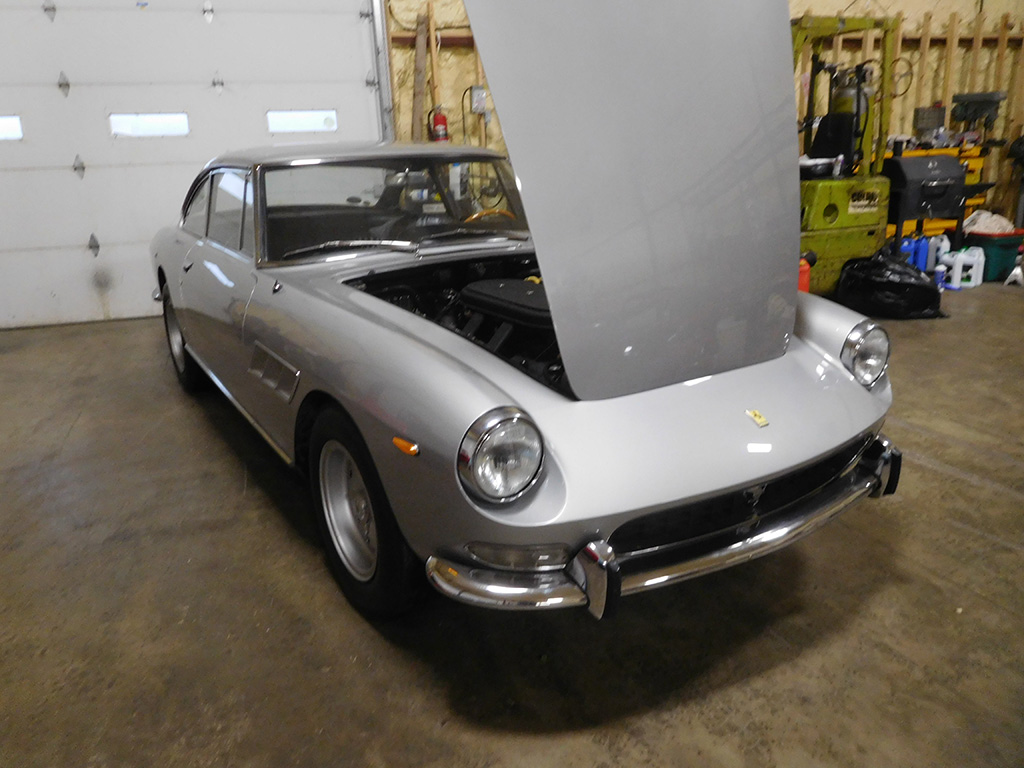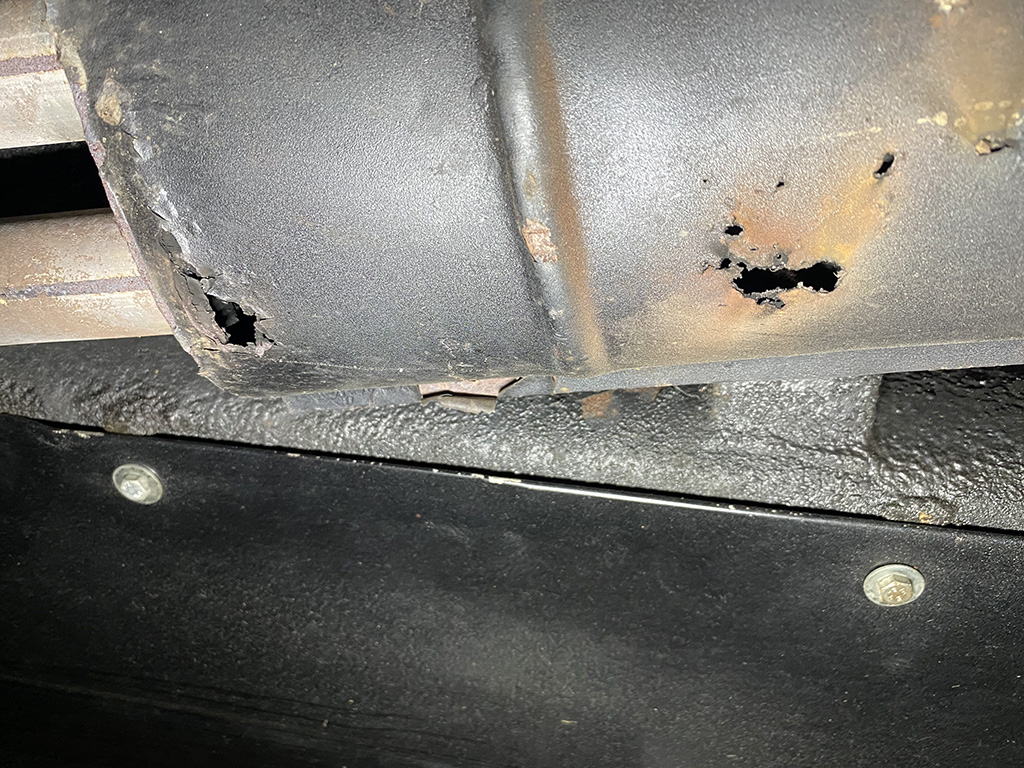Ferrari 330 Exhaust Repair

I have a SII Ferrari 330GT 2+2 at the shop waiting for a center console to be fabricated and upholstered so I wanted to make sure everything else was ready to ship this car back home, but when I fired her up, I heard some noises that sounded suspiciously like an exhaust leak.

I took a peek underneath and found a couple of rust stains, but poking them a little bit showed these little stains were actually the signs of rust through holes in the mufflers.

This is classic ANSA muffler rust. It starts with small pinholes inside the mufflers that eventually rust through and become big holes. There are a number of factors that cause this kind of rot. ANSA systems are made with mild steel and not all steel is created the same. The amount of recycled steel and other base alloys added, along with how much of the impurities removed during steel making can affect the durability and longevity of steel. There’s a real struggle to the old adage “they just don’t make ’em like they used to!”
Add to this problem that Ferraris aren’t driven much, and if the owner does short trips or simply starts the car in the garage for just a few minutes to “warm it up” thinking he’s helping the car, the damage shows up in the exhaust system. This moisture from the exhaust gases builds up inside the pipes and mufflers when the exhaust isn’t given enough time to heat up and evaporate the water. It collects in the lowest point of the system, slowly rusting the system from the inside out.

Our options on this car was to replace the rusted out mufflers, but the rest of the system was in pretty good shape. Luckily, I had a system from another car the I could cannibalize the sections I needed to replace the rusty sections on the 330 instead of installing a completely new system. The other side may last a few more years because rust never sleeps, but this was cheaper repair without a full replacement!




